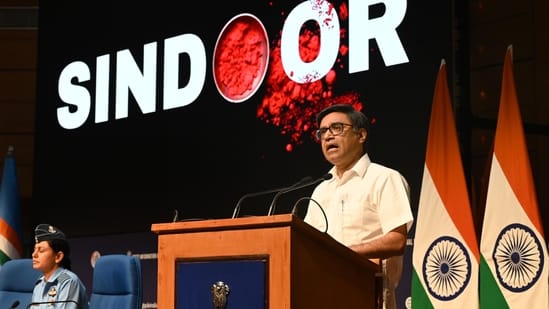
May 8, 2025 — Tensions between India and Pakistan have intensified following a series of military exchanges, prompting international concern over the potential for broader conflict between the nuclear-armed neighbors.Wikipedia+3Time+3The Sun+3
Background: Pahalgam Attack Sparks Retaliation
The current escalation traces back to the April 22 attack in Pahalgam, Indian-administered Kashmir, where militants killed 26 Hindu tourists. India attributed the attack to Pakistan-based groups, including Jaish-e-Mohammed and Lashkar-e-Taiba, though Pakistan denies involvement. In response, India launched “Operation Sindoor” on May 7, targeting alleged terrorist infrastructure in Pakistan and Pakistan-administered Kashmir. The strikes reportedly hit nine locations, including Bahawalpur and Muridke, resulting in at least 31 civilian deaths and 46 injuries, according to Pakistani officials .Wikipedia+6Wikipedia+6El País+6Time+2Wikipedia+2Wikipedia+2The Sun+3Wikipedia+3Wikipedia+3
Military Engagements and Civilian Impact
Pakistan reported shooting down 12 Indian drones and claimed to have downed several Indian fighter jets, though India disputes these assertions. Pakistan’s Prime Minister Shehbaz Sharif condemned the Indian strikes as an “unlawful act of war” and vowed retaliation . Both nations have reinforced their border defenses, and civilians in border areas, particularly in Kashmir, have been evacuated or sought shelter amid ongoing military exchanges .Wikipedia+4AP News+4The Sun+4The Sun
International Reactions and Mediation Efforts
The international community has expressed deep concern over the escalating conflict. Former U.S. President Donald Trump offered to mediate between the two nations, emphasizing the need for de-escalation . Countries including the U.S., U.K., and members of the European Union have called for restraint and urged both sides to engage in dialogue to prevent further escalation .AxiosWikipedia
Economic and Humanitarian Implications
The conflict poses significant risks to regional stability and economic recovery, particularly for Pakistan, which is grappling with inflation and debt. The suspension of the Indus Waters Treaty by India has exacerbated tensions, with Pakistan reporting a 90% drop in water flow through the Chenab River, raising concerns over water security and agricultural impact .Financial TimesWikipedia+1Asia Times+1
Preparedness and Civil Defense Measures
In anticipation of potential escalation, India conducted a nationwide civil defense exercise, “Operation Abhyaas,” on May 7, involving air-raid drills, blackout simulations, and evacuation protocols across 244 districts . The Indian Air Force also initiated “Exercise Aakraman,” focusing on offensive operations and coordination among military branches to enhance readiness .WikipediaWikipedia
Outlook
As military engagements continue and diplomatic efforts intensify, the situation remains volatile. The potential for miscalculation or further escalation underscores the urgency for both nations to pursue diplomatic channels and avoid actions that could lead to a broader conflict with devastating consequences










